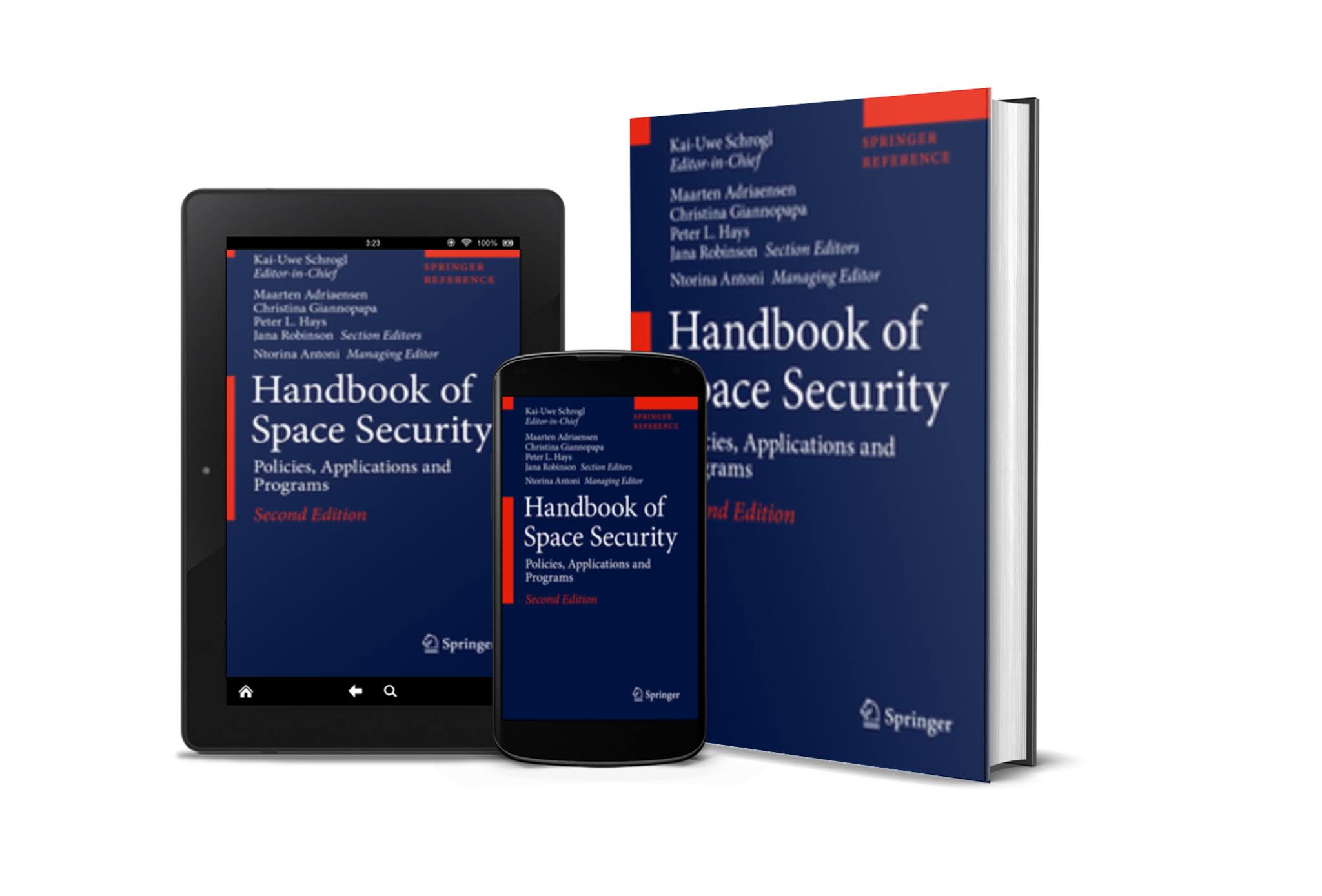Book Review: educational
Title- Handbook of Space Security: Policies, Applications and Programs
Author- 120 authors from 30 countries
Editors - Kai-Uwe Schrogl, Maarten Adriaensen, Peter L. Hays, Ntorina Antoni, Christina Giannopapa, Jana Robinson
Format- Paperback, eBook
Link- Amazon, Springer
Pages- 1587
Publisher- Springer Nature Switzerland AG 2020
Date- 2020
Retail Price- 623,99 €
ISBN- 978-3-030-23209-2 , 978-3-030-23210-8 (eBook), 978-3-030-23211-5 (print and electronic bundle)
https://doi.org/10.1007/978-3-030-23210-8
"Space security is a key factor for survival"
Do you want to explore the security aspects related to space from various regions perspective? If yes, then this is the perfect book to dive in. Let's look at a brief review of it.
In the second edition of the Handbook of Space Security, authors have explained the space security from various aspects which covered perspectives of regions like Africa, Asia, Europe, North America, and South America. The four parts are “Part I International Space Security Setting, Part II Space Security Policies and Strategies of States, Part III Space Applications and Supporting Services for Security and Defence, and Part IV Space Security Programs Worldwide and Space Economy Worldwide''. These are further divided into various parts which have been contributed by 120 authors and are from around the globe. This book is a bouquet of ideas about the new paradigm of space security from a diverse viewpoint. Every topic has been covered politically, legally, economically, and technology-oriented analysis. This book is perfectly organised in terms of the author's name and their details, abbreviating and explaining each part with their sub-topics holding the detailed and descriptive explanation of every aspect.
The first part of the book "International Space Security Setting" asserts the foundational establishment of the term "space security". Here, "Security" means the civilians as well as military. In the upcoming years, the space objects will have "dual-use" which may urge the space domain to have space laws for the military as well as weaponization sectors at the same time. Space governance and sustainability go hand in hand in the space domain as well as in this book. The definitions related to space have been beautifully articulated. The first part also covers the arms control treaties for space. It also mentioned that the space laws will be changable as space will be having new technologies. They shall have new dangers which can become a threat to mankind or space objects or unknown space life. Space law is necessary to govern new technologies in space. It shall provide an advanced legal framework which shall take the place of threadbare international law which barely covers every domain of space. Space cooperation is also a big topic in the space domain. This topic is a much-neglected one in the space sector, but gladly, this book has included it with some case studies of Russia and China global space which has brought a huge change in space economy and advancement. The developed countries majorly known as space-faring nations, which have attained a certain height in this sector have decided to expand their territory in developing and under-developed countries. This is a "chain" which is known as cooperation. This is the trending and the best way to develop the space sector globally. The technological advancement in space can become a hindrance for the exportation of space technologies for the preservation of the security of the nation. This book also has a chapter dedicated to the "critical space infrastructure" which says that space may have any kind of "critical infrastructure" and tries to analyse it elegantly.
The second part begins with the cold war period. This part is more focused on the analysis of the space security strategies and policies of various regions of the world. It also includes the various inventions, dangers, policies, strategies for tackling the situation and also recommendations. It has also discussed space weaponisation and terrorism. Safeguarding the space from terrorism through a certain set of policies and laws can be a preventive measure. The nation should protect itself from their enemy nations as the level of terrorism is advancing and has reached to space with the help of activities like spoofing and jamming. Data is not secure in this advanced technological age. They have elaborately discussed it with several case studies of numerous parts of the globe.
The third part of the book discusses about space services like Earth Observation, PNT and SSA, etc. This part has truly shown the amalgamation of the law and technology. It has elaborately explained about the civil and defence privileges in space. It has mostly discussed about space assets and space services. The law behind their safe usage and also to have structures while advancing the technologies of those. There are various new emerging ways for terrorism and data hacking, which needs a protective legal structure.
The fourth part has a mention of the emerging private space realm. In the present context, the commercial space and launches have "dual-use" which poses tough threat to figure out the independent space security strategy. Initiating with ICBM, the security domain in space have headed towards the most advanced technologies now-a-days. Satellites with minimum functionality of science and military aspects have broadened their sectors in Earth Observation, telecommunications and navigation etc. This part of the book has sophisticatedly explained the launch services of all the regions, the global space economy and also the contributions of various countries in it. It has also put light on the United Nations stand on it and what measures have been adopted and implemented.
In a nutshell, this book has pioneered the space security domain with the detailed explanation of the several concepts maintaining the diversity, integrity and real essence. The continuation of chapters as a complete series of topics has made the structure well-defined. These chapters have been allocated for specific topics which make the reader easy to follow. It is recommended to read for the space enthusiasts even you are from law, policy or technology stream.







0 Comments